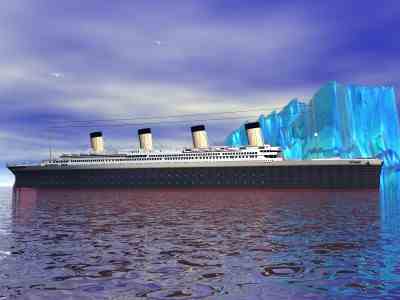Titanic Construction Facts
Titanic Construction
The Titanic Construction facts tell us that the Titanic was built in Belfast by the ship building company Harland and Wolff.
The company was owned by Lord Pirrie, a friend of Bruce Ismay, managing director of the White Star Line. ( White Star Line commissioned the Titanic). The chief designer of the Titanic was his son-in-law, Thomas Andrews.
Titanic Facts:
When was the Titanic built?
 |
|
- Where was the Titanic built in the Harland and Wolff Shipyard? Titanic’s yard number in the shipyard was 401. The construction of the Titanic took place on Slipway No 3 under the Arrol Gantry.
- The Titanic sister ship, RMS Olympic was already three months into her build on the slipway beside Titanic.
- Titanic Construction Facts show the keel which was laid on March 1909 was important to the builders because Harland and Wolff would receive the first payment from White Star.
- Steel plates were riveted onto the ribs of the ship which formed the frame of the hull. Many riveters ended up with hearing problems in later life because of the noise they endured while driving home rivets.
- 3,000,000 - the number of rivets used in the construction of the hull, a mix of iron and steel.
- In 1912, skilled shipyard workers who built Titanic earned £2 per week. Unskilled workers earned £1 or less per week.
- 14,000 - the number of men employed at the Harland & Wolff shipyard.
- There were twenty-four double ended Scotch class boilers and a further five single ended boilers which were housed in six boiler rooms. The double ended boilers measured 20 feet long, with a diameter of 15 feet 9 inches and contained six coal burning furnaces. The single ended boilers were 11 feet 9 inches long with the same diameter.
- With all boilers firing the Titanic produced around 46,000 horsepower.
- Thomas Andrew's original design of the Titanic was so efficient that it was originally conceived with only three funnels to service the massive boilers some 150 feet below. White Star thought it a necessity a ship of such grandeur must possess four funnels in the final drawing of how the Titanic was built. As a result only three of the funnels were functional and the fourth was purely aesthetic.
- The Titanic ship entered the dry dock in February 1912 to have her propellers fitted and her hull painted.
- When the Titanic was built, the Hull would measure 882.9 ft in length and 92 feet in width and require at least 59 feet of water to float unobstructed.
- The Titanic was equipped with a steam powered triple screw propulsion system to ensure it moved across the ocean at a respectable pace of approximately 22 knots but the blades were deliberately pitched at such an angle that the ship would not vibrate, discomfort or distract the passengers.
- The dry dock could hold 21 million gallons of water and was controlled by steam pumps. The pumps could empty the dock in just over an hour and a half.
Top to Titanic Construction Facts
Home to Uniquely northern Ireland


